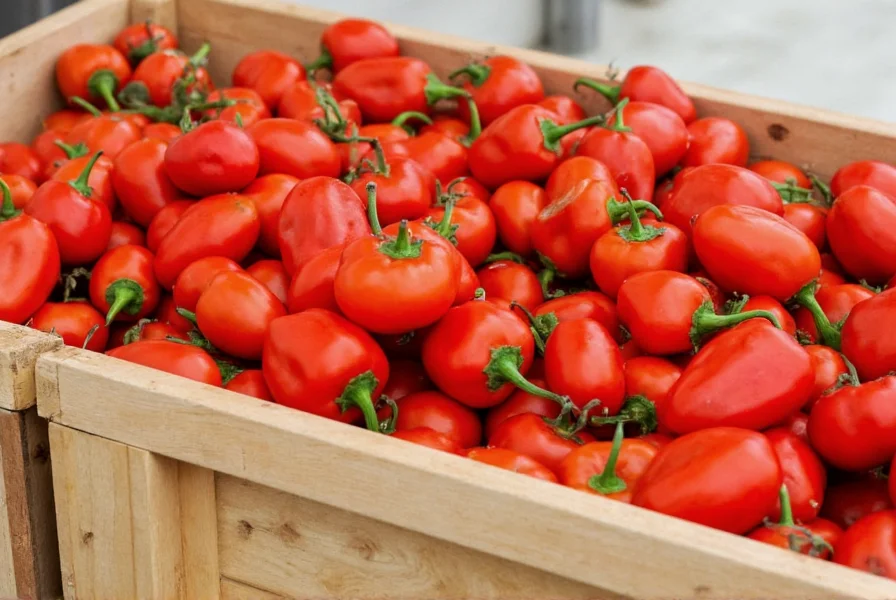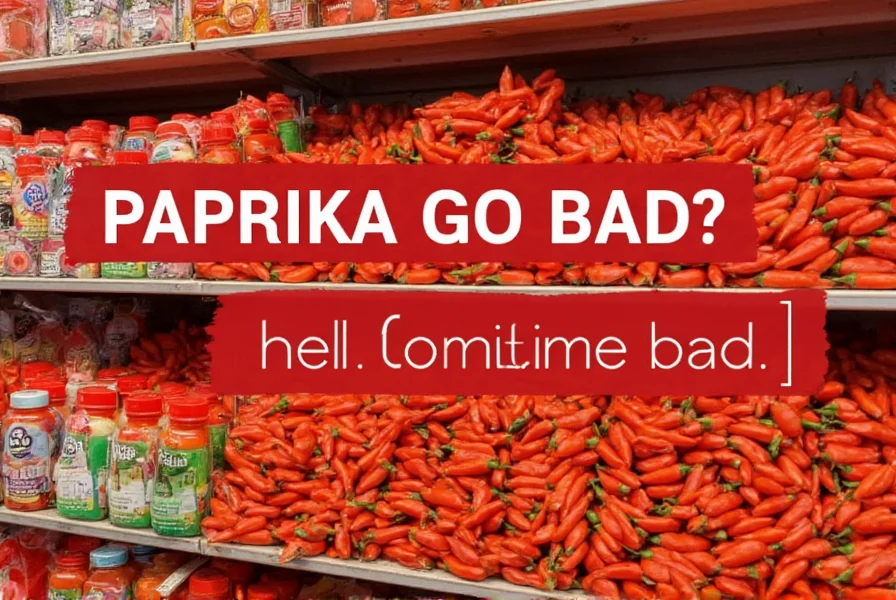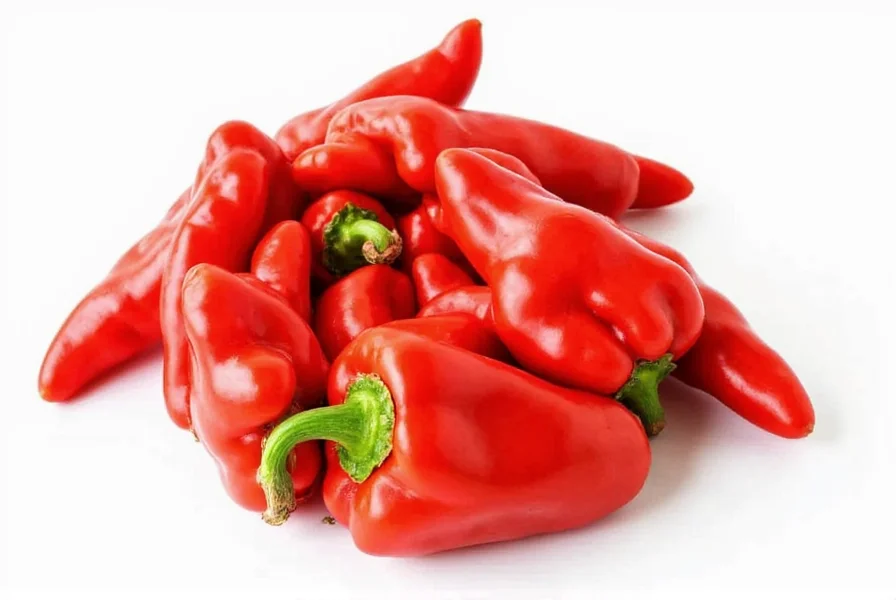Understanding paprika's shelf life is essential for maintaining the quality of your culinary creations. This vibrant red spice, made from ground sweet or hot peppers, brings distinctive flavor and color to dishes ranging from Hungarian goulash to Spanish paella. While paprika won't make you sick when past its prime, using degraded spice can significantly impact your cooking results.
How Long Does Paprika Last?
Paprika's shelf life depends on several factors including its form, storage conditions, and initial quality. Here's what you need to know about paprika expiration timelines:
| Paprika Type | Unopened Shelf Life | Opened Shelf Life | Best Quality Period |
|---|---|---|---|
| Ground Paprika | 3-4 years | 2-3 years | 1-2 years |
| Smoked Paprika | 3-4 years | 2-3 years | 1-2 years |
| Sweet Paprika | 3-4 years | 2-3 years | 1-2 years |
| Whole Paprika Pods | 4+ years | 3-4 years | 2-3 years |
These timeframes represent optimal quality periods rather than safety deadlines. Unlike perishable foods, spices don't develop harmful bacteria when they expire. The "best by" date on paprika packaging indicates when the manufacturer expects peak flavor and color, not when the product becomes unsafe.
How to Tell If Paprika Has Gone Bad
Identifying expired paprika involves checking multiple sensory indicators. Don't rely on just one factor when assessing your spice's condition:
Color Changes
Fresh paprika displays a vibrant red or deep orange-red hue. As it degrades, the color fades to a dull brick red or even brownish tone. Significant color loss indicates the spice has lost much of its flavor compounds and carotenoids responsible for both color and health benefits.

Smell Test
High-quality paprika has a distinctive sweet, slightly smoky aroma with subtle pepper notes. Expired paprika develops a musty, dusty smell or loses its fragrance entirely. Give your paprika a good sniff—if you can't detect its characteristic scent, it's likely past its prime.
Taste Evaluation
When in doubt, perform a cautious taste test. Place a small amount on your tongue. Fresh paprika delivers immediate flavor—sweet varieties offer mild pepper notes while hot versions provide noticeable heat. Expired paprika tastes flat, bland, or has developed off-flavors. Remember that tasting significantly degraded spices won't harm you but won't enhance your cooking either.
Texture and Moisture
Check for clumping or moisture inside the container. Properly stored paprika should flow freely. Clumping indicates moisture exposure, which accelerates degradation and potentially creates mold risk. Discard any paprika showing visible mold, regardless of expiration date.
Proper Paprika Storage Methods
Maximizing paprika's shelf life depends primarily on storage conditions. Follow these evidence-based storage recommendations:
Airtight Containers Are Essential
Transfer paprika from flimsy store packaging to airtight containers immediately after purchase. Glass jars with tight-sealing lids or specialized spice containers prevent air and moisture exposure. Oxygen exposure causes oxidation that degrades paprika's flavor compounds and color pigments.
Temperature and Light Control
Store paprika in a cool, dark place away from heat sources. The ideal storage temperature is below 70°F (21°C). Avoid storing near stoves, ovens, or in cabinet spaces exposed to direct sunlight. Light and heat accelerate the breakdown of paprika's volatile compounds.
Avoid Refrigeration (Usually)
Contrary to popular belief, refrigerating paprika often does more harm than good. The humid environment inside refrigerators introduces moisture that causes clumping and accelerates flavor loss. The exception is in extremely humid climates where pantry storage isn't viable—then use an airtight container in the refrigerator and allow the container to reach room temperature before opening to prevent condensation.

Maximizing Paprika's Usable Life
Implement these practical strategies to get the most from your paprika:
- Buy in smaller quantities—Purchase only what you'll use within 1-2 years for optimal freshness
- Label containers—Mark purchase or opening dates to track shelf life
- Keep away from spices with strong odors—Paprika readily absorbs surrounding scents
- Use clean, dry utensils—Introducing moisture during use accelerates degradation
- Consider whole pods—Grind paprika as needed for maximum freshness (whole pods last significantly longer)
Using Paprika Past Its Prime
Expired paprika won't make you sick but delivers diminished culinary results. When working with older paprika:
- Use slightly larger quantities to compensate for flavor loss
- Combine with complementary spices to enhance overall flavor profile
- Avoid using in dishes where paprika is the star ingredient
- Never use paprika showing mold, unusual odors, or significant clumping from moisture exposure
Remember that paprika's vibrant color contributes significantly to dish presentation. Faded paprika won't provide the same visual appeal, potentially making dishes look less appetizing regardless of taste.
Does Expired Paprika Lose Nutritional Value?
Yes, paprika gradually loses its nutritional compounds over time. Fresh paprika contains notable amounts of vitamin A (from beta-carotene), vitamin E, and antioxidants. These degrade with exposure to light, air, and heat. While expired paprika still contains some nutritional value, it won't deliver the same health benefits as fresh product. For maximum nutritional benefit, use paprika within its peak quality period.
FAQ: Paprika Shelf Life Questions
Can you get sick from expired paprika?
No, expired paprika won't make you sick. Unlike perishable foods, spices don't harbor harmful bacteria when they expire. At worst, degraded paprika loses flavor and color but remains safe to consume. Discard only if you notice mold, unusual odors, or significant moisture exposure.
How can you extend paprika shelf life?
Store paprika in an airtight container away from light, heat, and moisture. Keep it in a cool, dark pantry location rather than near your stove. Transfer from flimsy store packaging immediately. Consider buying whole paprika pods and grinding as needed, as whole spices maintain freshness significantly longer than pre-ground versions.
Does smoked paprika expire differently than regular paprika?
Smoked paprika follows similar expiration patterns as regular paprika but may retain its distinctive smoky flavor slightly longer due to the smoking process. Both types typically maintain peak quality for 2-3 years when properly stored, though smoked varieties might show flavor degradation more gradually in some cases.
What's the best way to test paprika freshness?
Perform a three-part freshness test: check for vibrant red color (not faded), smell for distinctive sweet/peppery aroma (not musty or absent), and taste a small amount (should have immediate flavor impact, not bland). If two or more indicators show degradation, your paprika has likely passed its prime quality period.
Can you freeze paprika to extend its shelf life?
Freezing paprika can extend its shelf life to 3-4 years, but requires careful handling. Place in an absolutely airtight container with no headspace to prevent freezer burn and moisture exposure. Allow the container to reach room temperature before opening to avoid condensation. Most home cooks find proper pantry storage sufficient, but freezing works for long-term preservation in ideal conditions.











 浙公网安备
33010002000092号
浙公网安备
33010002000092号 浙B2-20120091-4
浙B2-20120091-4